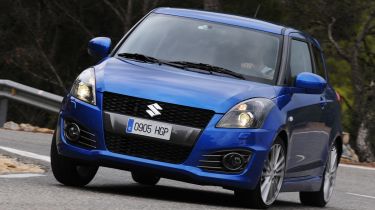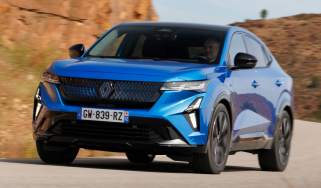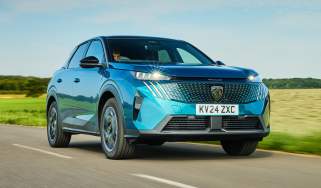Suzuki Swift Sport
We've driven the more efficient and powerful Suzuki Swift Sport – is it as good to drive as its predecessor?

The latest Swift Sport is every bit as good as its predecessor, offering up fantastic driving thrills in attractive and surprisingly grown-up package. Few cars – in any segment – can match the fun factor that comes from its lively blend of agile handling and a high-revving petrol engine. If you’re looking for a junior hot hatch, then it’s impossible to do better for less.
One of our favourite hot hatches has returned – this is the all-new Suzuki Swift Sport. Unveiled at the Frankfurt Motor Show in September, and due to go on sale in the UK early next year, this sporty three-door version of the Swift hatch is aiming to build on the cult success of its predecessor.
The design has certainly taken an evolutionary step forward and it’s now much easier to tell the Sport apart from the standard car. The finished model isn’t as extrovert as the Concept version shown at Geneva back in March, but plenty of buyers will appreciate the subtle approach taken to performance styling.
The three-door shape and tinted rear windows give it a much more compact and aggressive stance, as do the standard 17-inch alloy wheels, rear roof spoiler and deep honeycomb grille. Fin-like foglight clusters and darker headlights accentuate the wider, lower front bumper, and it looks every inch the pocket hot hatch.
Used - available now

2014 Suzuki
Swift
44,998 milesManualPetrol1.2L
Cash £6,890
2021 Suzuki
Swift
34,927 milesManualPetrol1.2L
Cash £10,100
2019 Suzuki
Swift
11,275 milesManualPetrol1.0L
Cash £10,700
2019 Suzuki
Swift
31,565 milesManualPetrol1.2L
Cash £8,200Mechanically, Suzuki has stuck closely to the original formula for this new incarnation, so the Sport is still powered by a 1.6-litre, naturally aspirated VVT petrol engine. Power ouput has been upped slightly to 134bhp, while torque has also increased with 160Nm now available from lower down the rev-range. That might not sound like much but in a car that weighs just over a tonne, it rarely feels underpowered.
A new six-speed manual gearbox, which features a clever new synchromesh in the first two gears for easier, faster changes, helps the Swift feel quick off the line. The shift action is light and accurate, and once the revs climb above 4,500rpm the engine really starts to come on song, with the twin-exhausts providing a frantic soundtrack as you push towards the redline.
The sport features a thoroughly bespoke suspension and steering setup, which has been tuned to give increased stiffness and high-speed stability over the standard car. The changes include stiffer suspension bushes, and higher spring rates front and back for a grippier, more planted feel.
These tweaks don’t totally transform the Swift’s character - it still rides very nicely for such a small car – but any hint of body roll has vanished, and the beautifully judged steering allows the driver to really exploit the balanced chassis. On winding roads the Swift feels wonderfully nimble, and the excellent brakes inspire plenty of confidence.
From behind the wheel, apart from the heavily bolstered sports seats, and a few red ‘Sport’ badges smattered throughout the cabin, there’s not much to separate it from the standard car. The simple dash layout remains unchanged, but the quality of the dash plastics easily matches class leaders from Ford and VW.
The three-door shape does make it trickier to get in and out of the back, but there’s a surprising amount of space for rear passengers. The sacrifice being that the shallow 211-litre boot is only suitable for a few small bags, though this does extend to 512-litres with the seat backs folded.
Handily, it is more efficient than before, with the extra gear boosting fuel economy from 39.8mpg in the outgoing model to 44.1mpg,while C02 emissions have dropped to 147g/km.
When the Swift Sport arrives in showrooms in January, its biggest rival is likely to be the revised Renaultsport Twingo, but if Suzuki can deliver on its promised price tag of around £14,000, then the French car has definitely got its work cut out.







